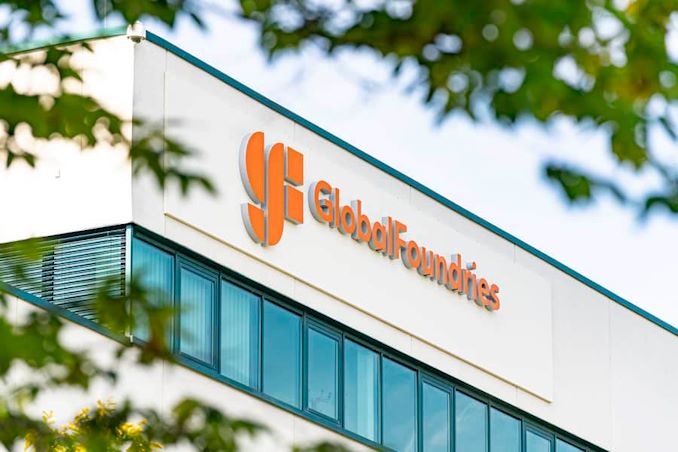GlobalFoundries to Receive $1.5 Billion In Funding from U.S. CHIPS Act
by Anton Shilov on February 20, 2024 8:00 AM EST- Posted in
- Semiconductors
- GlobalFoundries

The United States Department of Commerce and GlobalFoundires announced on Monday that the US will be awarding GlobalFoundries with $1.5 billion in funding under the CHIPS and Science Act. The latest domestic chip fab to receive money under the act, GlobalFoundries's funding will be spent to upgrade company's New York and Vermont fabs as well as build a brand-new fab module. In addition, GlobalFoundries is set to get $600+ million funding from the state of New York to support its expansion and modernization efforts over the next 10 years.
"These proposed investments, along with the investment tax credit (ITC) for semiconductor manufacturing, are central to the next chapter of the GlobalFoundries story and our industry," said Dr. Thomas Caulfield, president and CEO of GlobalFoundries. "They will also play an important role in making the U.S. semiconductor ecosystem more globally competitive and resilient and cements the New York Capital Region as a global semiconductor hub. With new onshore capacity and technology on the horizon, as an industry we now need to turn our attention to increasing the demand for U.S.-made chips, and to growing our talented U.S. semiconductor workforce."
There are three projects that GlobalFoundries is set to fund using the direct subsidies in the coming quarters.
First up, the company plans to expand its Fab 8 in Malta, NY, and enable it to build chips for automotive industry on technologies already adopted by its sites in Germany and Singapore. This expansion is crucial for meeting the increasing demand for chips by the transforming automotive industry. Furthermore, the project will diversify GF's flagship Malta fab into different technologies and end markets, which is something that will ensure its utilization going forward.
In addition to the Malta expansion, GlobalFoundries plans to construct a new state-of-the-art fab (or rather a module) on the same campus. This new facility aims to meet the anticipated demand for U.S.-made essential chips across a wide range of markets, including automotive, aerospace, defense, and AI. The construction of this new fab, along with the expansion of the existing production facility, is expected to triple Malta's current capacity over the next decade, with a projected increase in wafer production to one million per year.
Finally, GlobalFoundries plans modernization of its Essex Junction, Vermont facility focuses on upgrading existing infrastructure and expanding capacity. This project will also establish the first U.S. facility capable of high-volume manufacturing of next-generation gallium nitride (GaN) semiconductors. These chips are vital for various applications, including electric vehicles, datacenters. power grids, and communication technologies.
In general, GlobalFoundries's investment plan exceeds $12 billion across its two U.S. sites over the next decade, supported by public-private partnerships with federal and state governments and strategic ecosystem partners. According to the company, this investment is expected to generate over 1,500 manufacturing jobs and approximately 9,000 construction jobs, which the company is promoting as contributing significantly to the local economy.
The funding and expansion efforts by GlobalFoundries, in collaboration with the U.S. Department of Commerce and New York State, are aimed at enhancing the competitiveness and resilience of the U.S. semiconductor ecosystem. These initiatives also underscore the contract chipmaker's commitment to sustainable operations and workforce development, aligning with the company's strategic goals to strengthen the semiconductor talent pipeline and support the growing demand for U.S.-made chips.
AMD, Qualcomm, General Motors, and Lockheed Martin welcomed the grants and highlighted importance of the U.S. semiconductor supply chain for emerging applications like software defined vehicles and autonomous vehicles as well as global trends like 5G, AI, HPC, and edge computing.
Sources: U.S. Department of Commerce, GlobalFoundries










5 Comments
View All Comments
NextGen_Gamer - Tuesday, February 20, 2024 - link
Very curious to see how "state-of-the-art" the new state-of-the-art fab module is going to be, considering right now GF is still only manufacturing 12-nm and up nodes. 7-nm perhaps? Maybe even 5-nm?meacupla - Tuesday, February 20, 2024 - link
I am very sure it will be 12nmLP+ or 12nm class.They abandoned 7nm and haven't even started on 5nm. There is 0% chance the new fab would use those.
12nm is still useful when the resulting chip design would be too small on smaller nodes.
lmcd - Tuesday, February 20, 2024 - link
This is a bit misleading because GF has proven willing to pay to license other fabs' implementations. Could be a Samsung 8nm knockoff if Samsung is willing to license it (which it likely is)Dante Verizon - Tuesday, February 20, 2024 - link
I suspect it won't be enough to get the 7nm EUV process off the ground."It would have cost GF $2-4 billion to ramp up the 40-50,000 wafers/month capacity needed to have a chance of making a return on the node. “The financial investment didn’t make as much sense as doing something else,” said Tom Caulfield, the former general manager of Fab 8 named chief executive of GF in March."
Blastdoor - Wednesday, February 21, 2024 - link
It doesn’t have to totally cover the cost, just lower the cost to GF enough to make the investment worthwhile. It would seem that it must have been close to worthwhile if GF had already bought the EUV machines before. Maybe this support will push them over the edge, especially if they can license from Samsung (who, in turn, has previously licensed from IBM.)